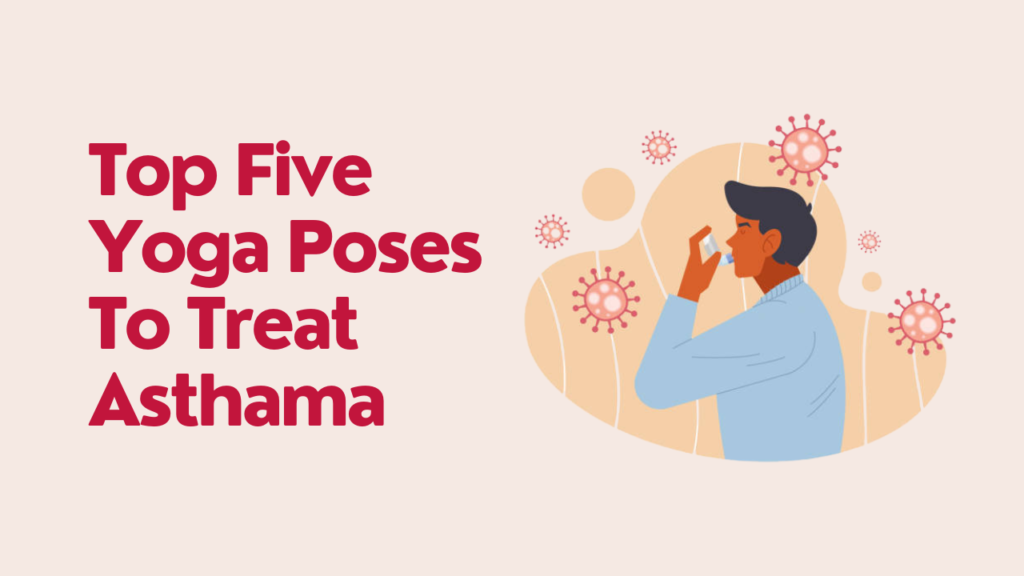Introduction
Asthma is a chronic respiratory condition that affects millions of individuals worldwide, causing symptoms such as wheezing, shortness of breath, and chest tightness. While medical treatment plays a crucial role in managing asthma, incorporating complementary practices like yoga can provide additional benefits. Yoga, focusing on deep breathing, relaxation, and gentle movements, has shown promise in helping individuals with asthma find relief and improve their overall respiratory health. In this article, we will explore the top five yoga poses specifically targeted to treat asthma symptoms in many of the best Ayurvedic Treatment Centre. By integrating these poses into regular practice, individuals with asthma can potentially experience enhanced lung function, reduced inflammation, and a greater sense of well-being. Let’s delve into the world of yoga and discover the transformative power it holds for those seeking natural and holistic ways to alleviate asthma symptoms.
Sukasana Yoga pose (Easy pose)
Sukasana (Easy Pose) indirectly contributes to asthma management by promoting relaxation and reducing stress, a common trigger for asthma. This seated pose cultivates a calm and centered state of mind, helping individuals connect with their breath and improve lung capacity. By sitting with an upright posture, Sukasana creates more space in the chest cavity, potentially easing breathing difficulties associated with asthma. Additionally, the pose activates the body’s relaxation response, reducing muscle tension around the chest and airways. According to some of the best Ayurvedic Doctors in Prayagraj, incorporating Sukasana into an overall asthma management plan can provide a foundation for improved respiratory health.
Dandasana (Staff pose)
Dandasana, also known as the Staff pose, offers potential benefits in managing asthma symptoms. According to the experts of the Wellness Centre in Prayagraj, this yoga pose promotes good posture and encourages deep breathing, which can be advantageous for individuals with asthma. Sitting with the spine erected and legs extended, Dandasana helps open the chest, expand lung capacity, and improve respiratory function. It supports proper breathing mechanics and encourages a more efficient exchange of oxygen and carbon dioxide. Additionally, Dandasana strengthens the core and back muscles, which can assist in maintaining an upright posture and reducing strain on the respiratory system. Incorporating Dandasana into a comprehensive asthma management plan can aid in optimizing breathing and enhancing overall respiratory well-being.
Upavistha Konasana (Seated Wide Angle Pose)
Upavistha Konasana, or the Seated Wide Angle Pose, can potentially contribute to the management of asthma symptoms. This yoga pose offers several benefits for respiratory health. Sitting with legs spread wide apart and leaning forward, Upavistha Konasana helps stretch and open the chest, promoting improved lung capacity and breathing. The pose also stretches the inner thighs and groins, releasing tension and facilitating relaxation. Additionally, the Upavistha Konasana can help alleviate anxiety and reduce stress, which are common triggers for asthma. Including Upavistha Konasana as part of an overall asthma management plan may support respiratory function and contribute to a sense of well-being.
Uttanasana (Forward bend pose)
Uttanasana, or the Forward Bend Pose, offers potential benefits for individuals seeking to manage asthma symptoms. This standing forward bend pose can assist in improving respiratory function. Uttanasana encourages a deep release of the breath and stretches the back muscles and hamstrings. This elongation of the torso and the gentle compression of the abdomen during the forward bend pose may help to expel stale air from the lungs, making room for fresh oxygen to enter. Additionally, the pose promotes relaxation, reduces stress, and calms the nervous system, potentially mitigating asthma triggers. Incorporating Uttanasana into an asthma management routine may enhance breathing and support overall respiratory well-being.
Baddhakonasana (Butterfly pose)
Baddhakonasana, also known as the Butterfly pose, can be beneficial in managing asthma symptoms. This seated pose helps improve respiratory health through its effects on posture, breathing, and relaxation. Baddhakonasana involves sitting with the soles of the feet together and gently pressing the knees down. This posture opens the chest, expands the lungs, and encourages deep breathing, potentially improving lung capacity and airflow. The pose also helps release tension in the hips and lower back, promoting relaxation and reducing stress—an asthma trigger. Ayurvedic Doctors recommend that by incorporating Baddhakonasana into an asthma management routine, individuals may experience improved breathing and a sense of overall well-being.
Conclusion
In conclusion, the top five yoga poses discussed in this article offer potential benefits for individuals seeking natural ways to manage asthma symptoms. While yoga cannot cure asthma, it can serve as a complementary practice to conventional medical treatment. The poses, including Sukasana (Easy Pose), Dandasana (Staff pose) Upavistha Konasana (Seated Wide Angle Pose), Uttanasana (Forward bend pose), and Baddhakonasana (Butterfly pose), target different aspects of asthma management such as stress reduction, improved posture, enhanced breath control, and relaxation response activation. By incorporating these poses into a regular yoga practice, individuals with asthma may experience improved lung function, reduced inflammation, and a greater sense of well-being. It is important to consult with a qualified instructor of the Ayurveda Wellness Centre in Prayagraj or any healthcare professional to personalize the practice based on individual needs and limitations. With dedication and proper guidance, these yoga poses can be valuable tools in supporting respiratory health and managing asthma effectively.
